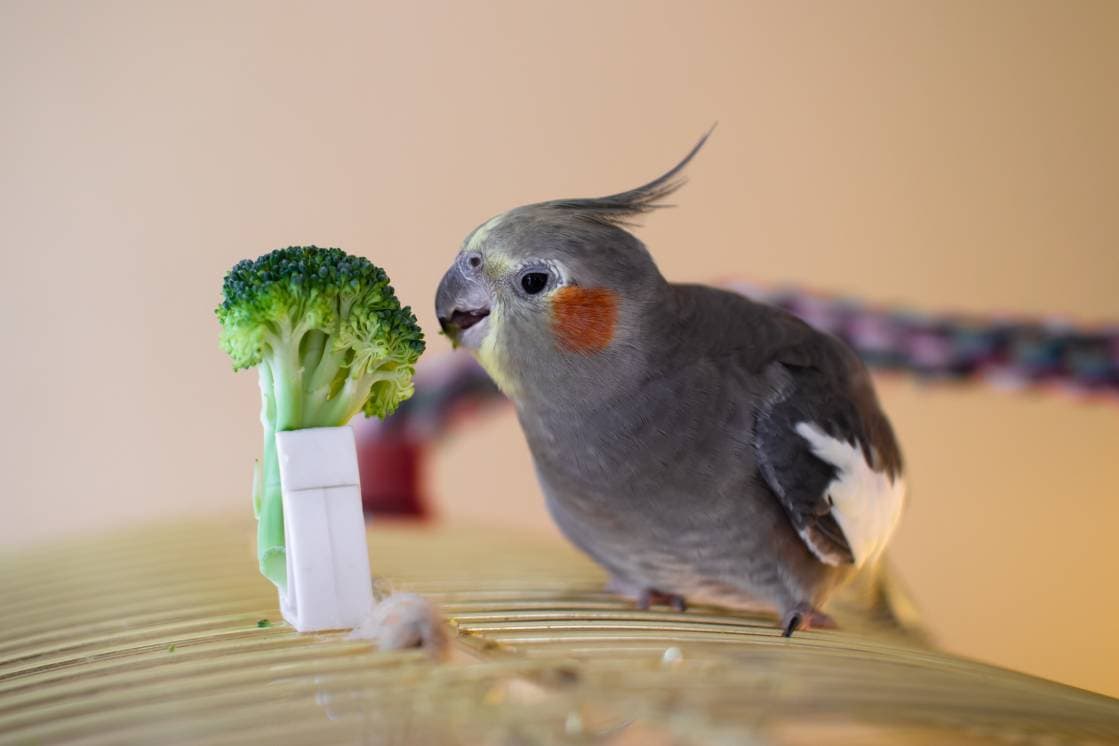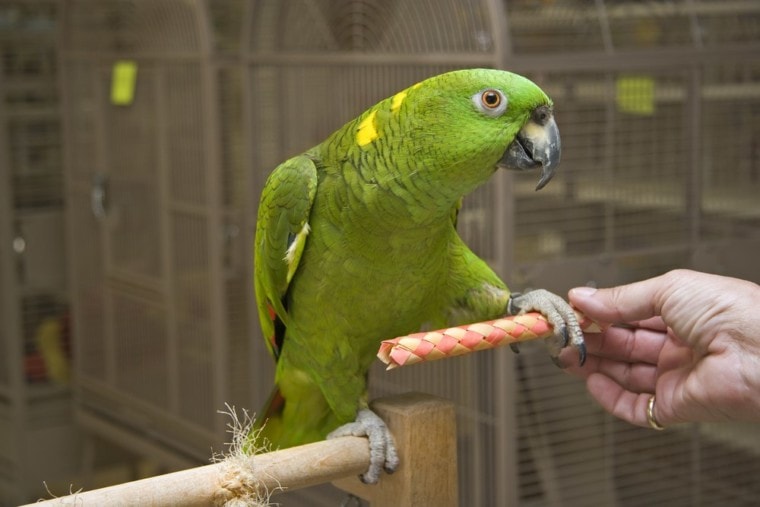
The Yellow-Naped Amazon is a chubby green parrot with a strong personality. He is known for his impressive ability to reproduce human voices and sounds. With a bit of patience, he can even serenade you, mimicking your favorite song to perfection!
But, however playful and charming he is, he is not suitable for inexperienced bird owners. Indeed, he can change his mood in a jiffy, especially the males during the breeding season. This can cause him to bite you, especially if you have little experience reading parrot body language. Besides, this species can live up to 50 years in captivity, making it a very long relationship with your winged friend.
So, read on if you want to learn more about this captivating bird and ensure you make an informed decision before adopting or purchasing a gorgeous Yellow-Naped Amazon parrot.
Species Overview
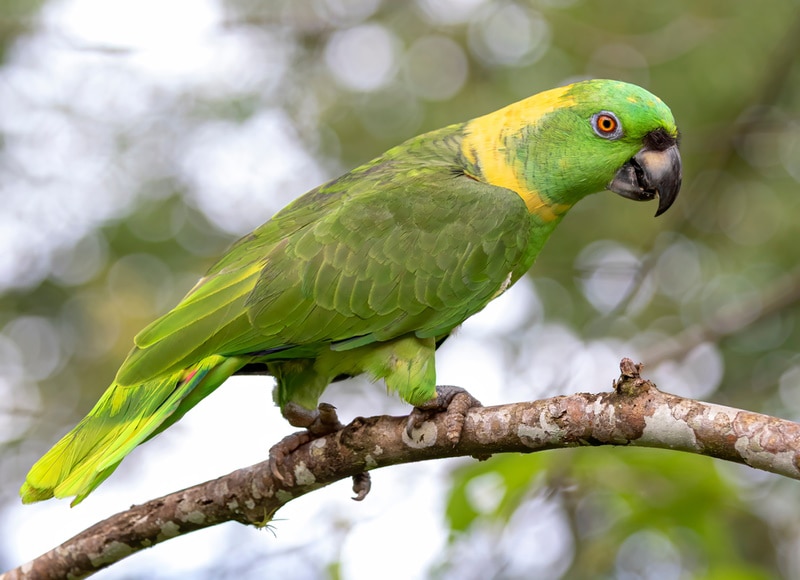
| Common Names: | Yellow-Naped Amazon or Yellow-Naped Parrot |
| Scientific Name: | Amazona auropalliata |
| Adult Size: | 14 inches |
| Life Expectancy: | 20 to 30 years in the wild; up to 50 years in captivity |
Origin and History
The Yellow-Naped Amazon is found mainly on the Pacific coast, from Costa Rica to southern Mexico. Once widespread in South America, this parrot is now listed as endangered on the IUCN Red List of Threatened Species. This is not surprising, given the loss of their habitat, the illegal capture of young birds for the pet trade, and global climate change. Indeed, these factors are responsible for the rapid decline in the populations of these magnificent birds. This is another good reason to be well informed before purchasing a Yellow-Naped Amazon from any breeder found online, otherwise, you could unintentionally encourage the illegal trade in these parrots.
Temperament
The Yellow-Naped Amazon is not a recommended parrot for beginners. Although he is blessed with a cheerful personality, can impressively imitate the human voice, and bond strongly with his owner, he does have a tendency to bite when stressed or over-excited. They are birds that can have an unstable temperament, especially during adolescence and the breeding season. Males, in particular, will not hesitate to protect their nests and bite inexperienced hands. The warning signs of aggression are dilated pupils, swollen feathers, restlessness, a spread tail, and high-pitched calls.
Any bird owner, especially of this parrot species, should be on the lookout for these signs and know how to read the bird’s body language before handling it.
This propensity for aggression doesn’t mean that all Yellow-Naped Amazons make bad pet birds. Indeed, they appreciate human contact, are affectionate, and can bond strongly with their owner. But this requires constant socialization from an early age, patience, good skills, and experience in handling parrots.
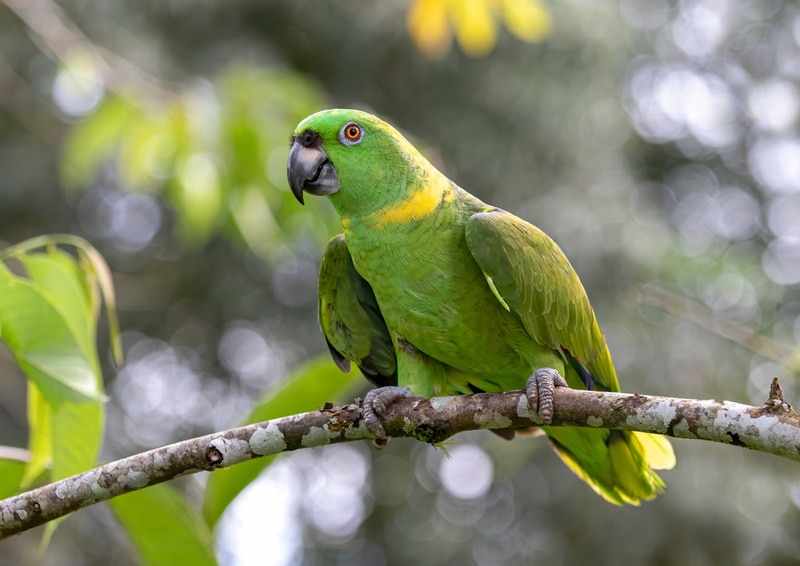
Speech & Vocalizations
The impressive ability to mimic human speech makes the Yellow-Naped Amazon a highly sought-after bird. However, he can be very noisy, especially when he feels neglected and wants to get your attention.
In addition, these birds are known to have, in their natural habitat, vocal dialects that differ depending on the region where they live. Thus, it is somewhat the equivalent of humans, whose language varies according to geographic boundaries.
Yellow-Naped Amazon Parrot Colors and Markings
As you can imagine, the Yellow-Naped Amazon got its name from its famous yellow spot on the crook of its neck. Its nape contrasts sharply with the rest of the plumage, which is entirely emerald green. The wings are slightly darker, while the flight feathers are an intense red. In addition, the tips of the wings are often dark blue. Some individuals sometimes have a little red on the upper wing, like two epaulets. Others sometimes show, but quite rarely, a slight yellow stripe on the forehead.
They are sometimes confused with the Yellow-Crowned Amazon (Amazona ochrocephala) or the Yellow-Headed Amazon (Amazona oratrix).
Besides, a rare blue mutation is present in this exotic bird that makes all the plumage a vibrant turquoise, with a snowy-white patch on the nape.
Caring for the Yellow-Naped Amazon Parrot
Yellow-Naped Amazon parrots need attention and a lot of socializing to grow into well-balanced, stable, happy, and healthy birds. As with the majority of parrots, they will become anxious and depressed if they are neglected. Adopting such a bird and then forgetting it in the corner of your house would be cruel and irresponsible; that’s why you need to make sure you have enough time to give to your Amazon over many, many years.
Also, you should consider adopting a pair so that they can keep each other company. In the wild, these birds form relationships that can last a lifetime; this probably explains why they tend to bond so strongly with their owner.
In all cases, you will need to provide a cage large enough to allow your parrot to fly freely: a minimum of 36 inches wide, 24 inches deep, and 36 inches high is required, but your best bet is to get the largest cage possible. Fill the cage with perches, branches, and toys suitable and safe for this bird, who loves to chew and interact with its objects.

Common Health Problems
Yellow-Naped Amazons are hardy birds, but they are prone to the following health problems:
Diet and Nutrition
In their natural habitat, Amazonian parrots eat various seeds, nuts, berries, and plants. But, like many birds kept in captivity, Yellow-Naped Amazons are prone to obesity. This condition can not only take years off a bird’s life but also lead to tumors and other serious health problems.
Offer your bird a diet made up of high-quality pellets combined with fresh organic vegetables and fruits. Of course, you can add a few nuts and seeds to their staple diet, but don’t overdo these high-fat foods.
Exercise
Yellow-Naped Amazons require daily physical and mental stimulation. Therefore, it is not enough to buy them a large cage; you should also offer them activities to prevent boredom. Puzzle toys, foraging, enrichment, and chew toys are all good options to stimulate the curiosity interest of this intelligent bird.
If your budget, space, and the climate in your area allow it, you could also set up a small aviary outside your home. That way, your amazon could spend a few hours a day flying in a ventilated and stimulating place.
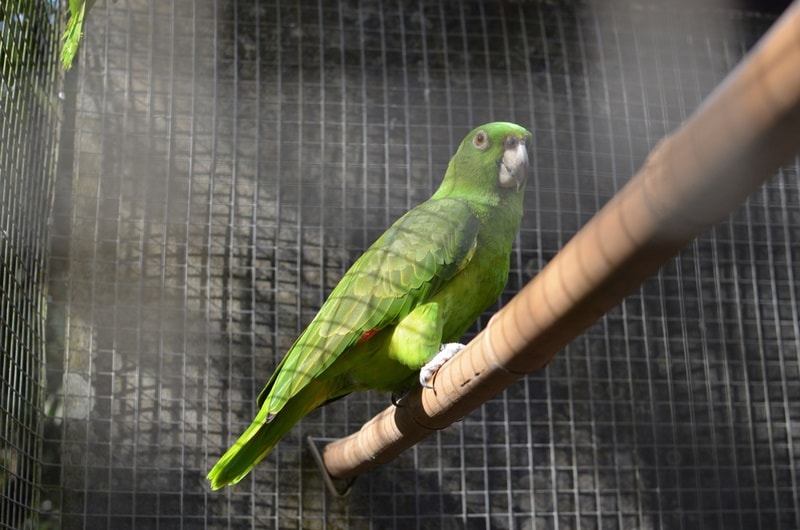
Where to Adopt or Buy a Yellow-Naped Amazon Parrot
Considering their endangered status, expect to pay top dollar to acquire one of these chattering birds. It is not unusual for reputable breeders to charge between $2,000 and $4,000. This is why you should first check at animal shelters and bird rescue centers if any of these birds are up for adoption.
Unfortunately, given their long lifespan, some Amazons may have more than ten owners in their lifetime. This is in part due to people’s inexperience and poor knowledge of these demanding birds.
Note: You must educate yourself about the history of any adult bird you are looking to adopt. Bad habits, past trauma, and inadequate training can result in a parrot that even the best bird behaviorists will struggle to rehabilitate.
Conclusion
Potential owners should remember that if they adopt a Yellow-Naped Amazon, they are caring for a creature that is just as intelligent and emotional as a human toddler. Because of their very long lifespan, taking care of them is not a commitment to be taken lightly.
Featured Image Credit: Jill Lang, Shutterstock


